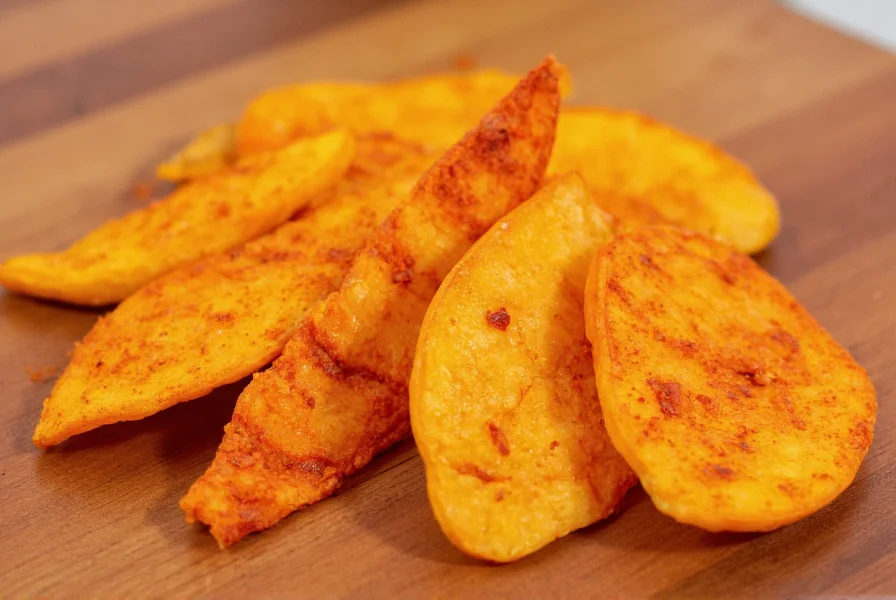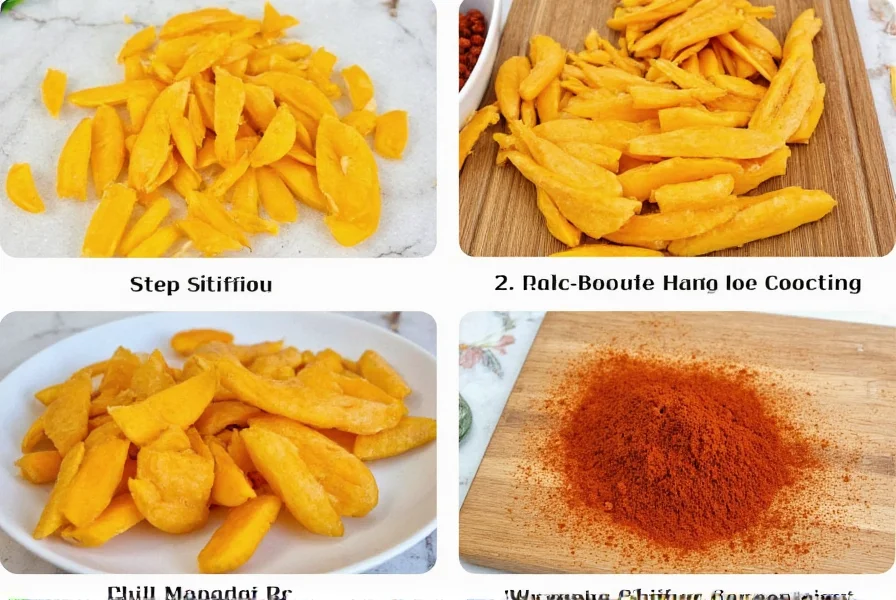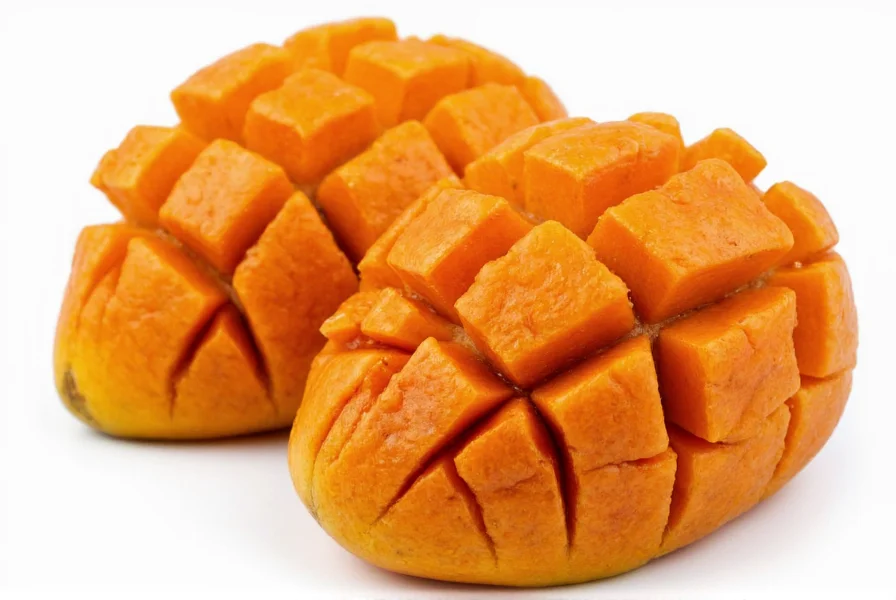Dried chili mango represents a perfect harmony of contrasting flavors that has captivated palates across multiple continents. This beloved snack transforms the tropical sweetness of mango into a more concentrated, shelf-stable form while adding layers of complexity through carefully balanced seasoning. The magic happens when ripe mangoes meet chili powder, creating a snack that satisfies multiple taste sensations simultaneously.
The Cultural Journey of Dried Chili Mango
While commonly associated with Southeast Asian cuisine, dried chili mango has fascinating cultural roots that span multiple regions. In Thailand, this snack is known as mamuang pow kglua and has been enjoyed for generations as both a street food and household staple. The Philippines offers its version called champoy, often incorporating additional ingredients like calamansi juice for extra tang.
Interestingly, dried mango with chili seasoning also gained significant popularity in Mexico and Latin America, where it's frequently paired with tajin seasoning—a blend of chili powder, lime, and salt. This cross-cultural adoption demonstrates how food traditions can evolve and adapt across geographical boundaries while maintaining their essential character.
| Region | Local Name | Distinctive Characteristics |
|---|---|---|
| Thailand | Mamuang pow kglua | Often includes fish sauce for umami depth |
| Philippines | Champoy | Frequently includes calamansi juice |
| Mexico | Mango con chile | Typically uses tajin seasoning blend |
| United States | Dried chili mango | Commercial versions often sweeter |
Understanding the Flavor Profile
The appeal of dried chili mango lies in its complex interplay of five fundamental tastes. The natural fructose in mango provides pronounced sweetness, while the citric acid delivers a refreshing tanginess. Chili powder contributes both heat and subtle earthiness, and salt enhances all other flavors while adding its own distinctive taste dimension. Some varieties include tamarind for additional sour complexity.
When properly balanced, these elements create what food scientists call flavor layering—where each taste sensation emerges sequentially rather than all at once. First comes the visual appeal of the vibrant orange-red color, followed by the sweet aroma, then the initial burst of sweetness that gradually gives way to the warming sensation of chili. This progression makes dried chili mango particularly satisfying to consume.

Nutritional Considerations of Dried Chili Mango
Dried chili mango offers several nutritional benefits while requiring mindful consumption. A typical 1-ounce (28g) serving contains approximately 100 calories, primarily from natural sugars in the mango. The drying process concentrates vitamins found in fresh mango, particularly vitamin C and vitamin A (as beta-carotene).
Chili powder contributes capsaicin, the compound responsible for chili heat, which has been studied for potential metabolic benefits. However, commercially prepared versions often contain added sugar and salt, which can increase calorie content and sodium levels. Those seeking the health benefits of dried mango with chili should look for products with minimal added ingredients.
For individuals managing blood sugar levels, understanding the dried chili mango nutritional information is particularly important. The glycemic index of dried mango is higher than fresh mango due to sugar concentration, though the fiber content helps moderate blood sugar response.
Traditional Preparation Methods
Creating authentic dried chili mango at home allows for complete control over ingredients and flavor balance. The traditional process begins with selecting perfectly ripe mangoes—typically varieties like Ataulfo, Kent, or Manila that offer the ideal sweet-tart balance. The mangoes are peeled, sliced thinly, and arranged on drying trays.
Traditional sun-drying requires 2-3 days of direct sunlight, though modern dehydrators can accomplish the same result in 8-12 hours at 135°F (57°C). The critical step comes after drying, when the mango slices receive their signature coating. A mixture of chili powder, salt, and sometimes sugar or tamarind is carefully applied, with proportions varying by regional preference.
Those interested in how to make dried chili mango at home should note that the quality of chili powder significantly impacts the final product. Mexican varieties often use árbol or de árbol chili powder, while Southeast Asian versions might incorporate bird's eye chili or paprika for color without excessive heat.

Culinary Applications Beyond Snacking
While enjoyed primarily as a standalone snack, dried chili mango has versatile culinary applications. Chefs increasingly incorporate it into both sweet and savory dishes for its complex flavor profile. It works beautifully as a garnish for ceviche, adding sweet-spicy notes that complement citrus-marinated seafood.
In dessert applications, chopped dried chili mango provides interesting texture and flavor contrast in chocolate bark, ice cream, or cheesecake toppings. The sweet-heat combination makes it an excellent pairing with creamy cheeses like queso fresco or goat cheese in salads and appetizers.
For beverage enthusiasts exploring spicy dried mango cocktail pairings, consider using small pieces as garnish for margaritas or micheladas. The fruit's concentrated flavor stands up well to alcoholic beverages without becoming overly sweet.
Proper Storage Techniques
To maximize shelf life and maintain optimal texture, proper storage of dried chili mango is essential. When stored correctly in an airtight container away from light and moisture, commercially prepared dried chili mango typically remains fresh for 6-12 months. Homemade versions generally have a shorter shelf life of 2-3 months.
For extended storage, consider placing the container in the refrigerator, which can double the shelf life. Freezing is another option for long-term preservation—simply place the dried mango in a freezer-safe container with minimal air. When properly frozen, dried chili mango can maintain quality for up to 18 months.
Those wondering about the best way to store dried chili mango should remember that humidity is the primary enemy of dried fruit snacks. Including a food-safe desiccant packet in the storage container can help absorb excess moisture and prevent stickiness or mold development.
Frequently Asked Questions
Is dried chili mango healthy?
Dried chili mango contains beneficial nutrients like vitamin C, vitamin A, and dietary fiber from the mango, plus capsaicin from the chili which may offer metabolic benefits. However, commercially prepared versions often contain added sugar and salt. For maximum health benefits, choose varieties with minimal added ingredients and consume in moderation as part of a balanced diet.
How does dried chili mango differ from regular dried mango?
Regular dried mango typically contains only mango (sometimes with added sugar or preservatives), while dried chili mango features a seasoning blend of chili powder, salt, and often tamarind or sugar. The chili version offers a complex sweet-spicy-tangy flavor profile compared to the straightforward sweetness of regular dried mango.
Can I make dried chili mango without a dehydrator?
Yes, you can make dried chili mango without a dehydrator using your oven or sun-drying method. For oven drying, set to the lowest temperature (140-170°F or 60-75°C), slice mangoes thinly, and dry for 6-10 hours with the oven door slightly ajar. Sun-drying requires 2-3 days of direct sunlight but works best in hot, dry climates with low humidity.
Why does some dried chili mango feel sticky?
Sticky dried chili mango usually indicates improper drying or exposure to moisture after production. The mango should be dried sufficiently to remove most moisture content while retaining some chewiness. If stored in humid conditions or with insufficient drying, the natural sugars can become sticky. Properly dried and stored chili mango should have a leathery texture without excessive stickiness.
Is dried chili mango suitable for people with dietary restrictions?
Dried chili mango is naturally gluten-free and vegan, making it suitable for those dietary restrictions. However, always check labels as some commercial varieties may be processed in facilities with allergens. For low-sodium diets, seek versions with reduced salt content. Those managing diabetes should be mindful of sugar content, as the drying process concentrates natural sugars.











 浙公网安备
33010002000092号
浙公网安备
33010002000092号 浙B2-20120091-4
浙B2-20120091-4